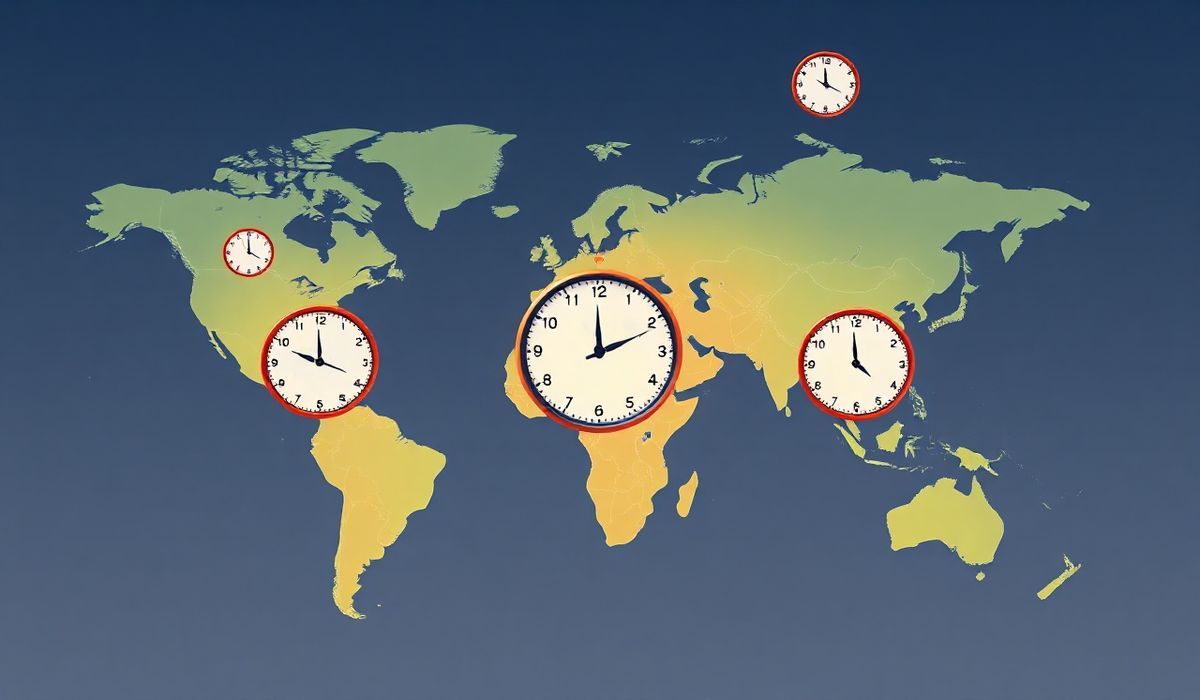Master the Basics of tzdata and Explore Essential Timezone APIs
tzdata is a widely used database designed for handling timezone information. It provides essential data for developers working with timezones and date-time calculations, making it easier to manage applications deployed globally. In this blog, we will explore the tzdata package, its key APIs, and provide practical examples to help you implement timezone operations in your applications.
Understanding tzdata
tzdata (Time Zone Database) contains standard timezone information used by systems around the world. It supports various languages and frameworks and ensures that the software adheres to global time policies and changes in daylight saving time (DST).
To start working with tzdata, you can install it using Python’s popular pytz library, which incorporates tzdata under the hood:
pip install pytz
Essential tzdata APIs and Examples
Below, we explore some of the most useful APIs provided by the pytz library, which utilizes the tzdata database.
1. Get All Timezones
You can retrieve a list of all supported timezones:
import pytz
for tz in pytz.all_timezones:
print(tz)
2. Localizing a Datetime
Convert naive datetime objects to timezone-aware datetime objects:
from datetime import datetime
import pytz
naive_time = datetime(2023, 10, 1, 12, 0, 0)
timezone = pytz.timezone('America/New_York')
localized_time = timezone.localize(naive_time)
print(localized_time)
3. Convert Between Timezones
Easily convert a datetime from one timezone to another:
from datetime import datetime
import pytz
utc_time = datetime(2023, 10, 1, 16, 0, 0, tzinfo=pytz.UTC)
est_time = utc_time.astimezone(pytz.timezone('America/New_York'))
print(est_time)
4. Get Current Time in a Timezone
Fetch the current date and time for a specific timezone:
from datetime import datetime
import pytz
tokyo_time = datetime.now(pytz.timezone('Asia/Tokyo'))
print(tokyo_time)
5. Handle Daylight Saving Time (DST) Transitions
Manage DST transitions effectively using the normalize() method:
from datetime import datetime, timedelta
import pytz
tz = pytz.timezone('Europe/London')
dt = tz.localize(datetime(2023, 10, 29, 1, 30, 0))
# Add an hour to simulate DST transition
dst_transition = dt + timedelta(hours=1)
normalized_time = tz.normalize(dst_transition)
print(normalized_time)
Building a Timezone-Aware Application
Let’s create a simple timezone-aware meeting scheduler application using the above APIs:
from datetime import datetime
import pytz
def schedule_meeting(meeting_time_str, from_tz_str, to_tz_str):
from_tz = pytz.timezone(from_tz_str)
to_tz = pytz.timezone(to_tz_str)
# Localize the meeting time
naive_time = datetime.strptime(meeting_time_str, '%Y-%m-%d %H:%M:%S')
localized_time = from_tz.localize(naive_time)
# Convert to target timezone
converted_time = localized_time.astimezone(to_tz)
return converted_time
# Example usage
meeting_time = "2023-10-01 15:00:00"
result = schedule_meeting(meeting_time, "Asia/Kolkata", "America/New_York")
print(f"Meeting Time in New York: {result}")
In the above example, the user inputs the meeting time and the source/target timezones, and the application converts the time accordingly.
Conclusion
tzdata provides the foundation for effective timezone management in software applications. With the help of Python’s pytz library, developers can perform various timezone-related tasks like localization, conversion, and DST handling seamlessly. Use the information shared in this guide to improve your timezone-dependent applications and enhance user experience globally.
Keywords for Search Engine Optimization (SEO)
Keywords like “tzdata Python tutorial,” “timezone API examples,” and “pytz library guide” can help boost the searchability of this blog post.




